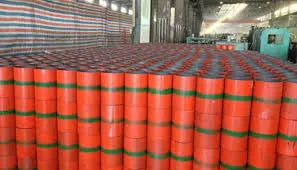- Afrikaans
- Albanian
- Amharic
- Arabic
- Armenian
- Azerbaijani
- Basque
- Belarusian
- Bengali
- Bosnian
- Bulgarian
- Catalan
- Cebuano
- Corsican
- Croatian
- Czech
- Danish
- Dutch
- English
- Esperanto
- Estonian
- Finnish
- French
- Frisian
- Galician
- Georgian
- German
- Greek
- Gujarati
- Haitian Creole
- hausa
- hawaiian
- Hebrew
- Hindi
- Miao
- Hungarian
- Icelandic
- igbo
- Indonesian
- irish
- Italian
- Japanese
- Javanese
- Kannada
- kazakh
- Khmer
- Rwandese
- Korean
- Kurdish
- Kyrgyz
- Lao
- Latin
- Latvian
- Lithuanian
- Luxembourgish
- Macedonian
- Malgashi
- Malay
- Malayalam
- Maltese
- Maori
- Marathi
- Mongolian
- Myanmar
- Nepali
- Norwegian
- Norwegian
- Occitan
- Pashto
- Persian
- Polish
- Portuguese
- Punjabi
- Romanian
- Russian
- Samoan
- Scottish Gaelic
- Serbian
- Sesotho
- Shona
- Sindhi
- Sinhala
- Slovak
- Slovenian
- Somali
- Spanish
- Sundanese
- Swahili
- Swedish
- Tagalog
- Tajik
- Tamil
- Tatar
- Telugu
- Thai
- Turkish
- Turkmen
- Ukrainian
- Urdu
- Uighur
- Uzbek
- Vietnamese
- Welsh
- Bantu
- Yiddish
- Yoruba
- Zulu
Understanding Tubing and Casing in Oil and Gas Production Operations
Tubing and Casing Essential Components of Oil and Gas Production
In the oil and gas industry, the integrity and efficiency of drilling operations depend heavily on the proper use of tubing and casing. These two components play a crucial role in the extraction of hydrocarbons from the earth, ensuring that the process is safe, effective, and environmentally responsible. This article will explore the purposes of tubing and casing, their differences, and the significance of their selection and installation in modern drilling practices.
Understanding Tubing and Casing
Casing and tubing are both types of pipes that are used in oil and gas wells, but they serve different purposes. Casing refers to a series of pipes that are installed in the wellbore after the borehole has been drilled. Its primary function is to stabilize the well, prevent the walls of the borehole from collapsing, and isolate various pressure zones within the earth. Casing also protects groundwater from contamination by oil, gas, or other fluids that could leak from the well.
On the other hand, tubing is inserted into the casing and is the conduit through which oil and gas are brought to the surface. It allows for the controlled flow of hydrocarbons and, in some cases, the injection of fluids necessary for enhanced recovery. Tubing must be designed to withstand the high pressures and corrosive environments often found in oil and gas operations.
Types of Casing
Multiple types of casing are utilized based on the specific needs of a drilling operation. The most common types include
1. Surface Casing This is the first layer of casing that is installed right after drilling reaches a certain depth. It provides structural integrity to the well and isolates it from shallow aquifers.
2. Intermediate Casing Installed at deeper depths, intermediate casing further protects the wellbore from external pressures and isolates different geological formations.
3. Production Casing This is the final casing used in the well. It runs from the bottom of the well to the surface and is designed to support the production of oil and gas.
tubing and casing

Types of Tubing
Tubing also comes in various types, tailored to the conditions of the well and the characteristics of the hydrocarbons being produced. Key types of tubing include
1. Oil Production Tubing Designed to withstand high pressures, this tubing type facilitates the flow of crude oil from the reservoir to the surface.
2. Gas Production Tubing Similar to oil tubing but optimized for gas flow, this tubing is designed to handle the unique properties of natural gas, including its lower density.
3. Injection Tubing Used for the injection of water or gas into the reservoir to enhance recovery rates, this tubing plays a vital role in maintaining reservoir pressure.
Importance of Selection and Installation
The selection and installation of tubing and casing are critical to the success of drilling projects. Engineers must take into account factors such as the well’s depth, the geological formations involved, the type of hydrocarbons being produced, and the environmental conditions.
Proper installation is equally important; a poorly installed casing can result in catastrophic failures, including blowouts or leaks that could have severe environmental impacts. Advanced technologies and techniques, such as real-time monitoring and automation, are increasingly being used to optimize the installation and ensure the long-term integrity of these components.
Conclusion
In summary, tubing and casing are vital components in the safe and efficient extraction of oil and gas. Understanding their roles, types, and the importance of careful selection and installation helps to ensure successful drilling operations while minimizing environmental risks. As the energy landscape evolves, the industry continues to innovate in tubing and casing technologies, emphasizing safety and sustainability in hydrocarbon production. Their significance cannot be overstated, as they are fundamental to meeting the world’s energy demands while protecting the planet.
-
Tubing Pup Joints: Essential Components for Oil and Gas OperationsNewsJul.10,2025
-
Pup Joints: Essential Components for Reliable Drilling OperationsNewsJul.10,2025
-
Pipe Couplings: Connecting Your World EfficientlyNewsJul.10,2025
-
Mastering Oilfield Operations with Quality Tubing and CasingNewsJul.10,2025
-
High-Quality Casing Couplings for Every NeedNewsJul.10,2025
-
Boost Your Drilling Efficiency with Premium Crossover Tools & Seating NipplesNewsJul.10,2025







